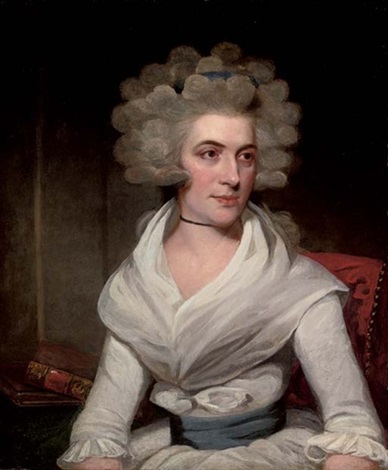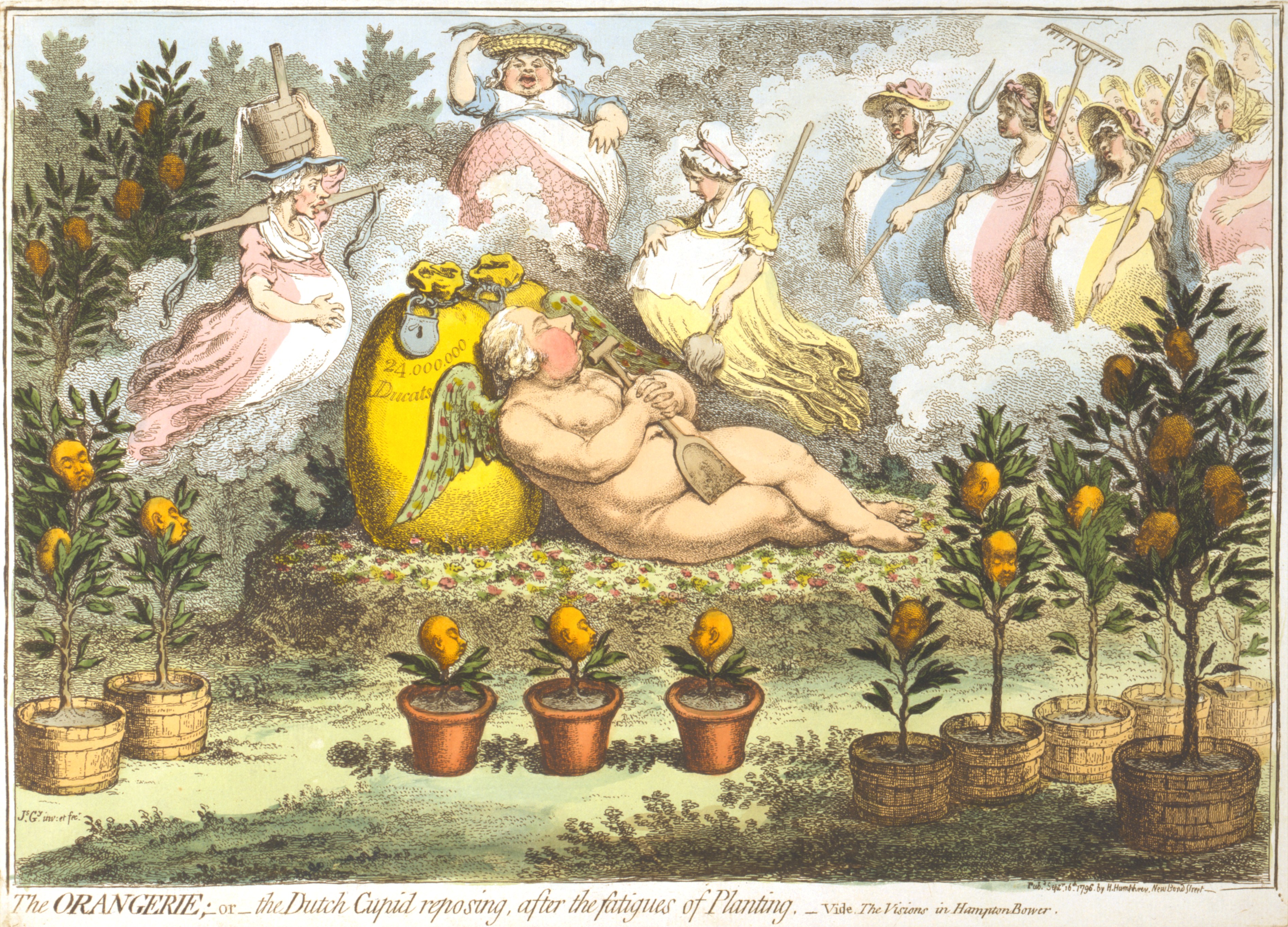|
Elbert De Hochepied
Elbert de Hochepied, 2nd Baron de Hochepied (6 January 1706 – 11 February 1763) was a Dutch politician and diplomat, who represented the Dutch Republic at the Sublime Porte. Early life Hochepied was born in Smyrna on 6 January 1706. He was the son of Clara Catharina Colyer (1657–1733) and Daniël Johan de Hochepied, 1st Baron de Hochepied (1657–1723), who was Dutch Consul at Smyrna, from 1688 to 1723. Among his siblings were Justinus Constantinus de Hochepied, Jacobus Byzantinus de Hochepied (who married Margarita Constantia van der Wielen), Daniël Alexander, Count de Hochepied (wife of Catherine Frémeaux), Petronella Jacoba de Hochepied (who married Gaspard de Fontenu), and Gertrude de Hochepied (wife of John Cooke, English Consul at Smyrna). His maternal grandparents were Maria Engelbert and Justinus Colyer, the Dutch Ambassador to the Ottoman Empire from 1668 to 1782 (who was a half-brother to Sir Alexander Colyear, 1st Baronet). His uncle, Jacobus Colyer, was als ... [...More Info...] [...Related Items...] OR: [Wikipedia] [Google] [Baidu] |
List Of Ambassadors Of The Netherlands To Turkey
The Kingdom of the Netherlands, Dutch ambassador in Ankara is the official representative of the Government in The Hague to the Government of Turkey. History *During the Ottoman Empire the envoys where next the Sublime Porte, the central government in Istanbul. Ottoman Empire was succeeded by Turkey and the capital was moved from İstanbul to Ankara. The title of the head of the state during the Ottoman times was sultans of the Ottoman Empire, Sultan. In the following list Sultans (Ottoman era) and Prime ministers (Turkish Republic era) are shown.(Turkish Republic was officially proclaimed in 1923) List of representatives Ottoman Empire Turkish Republic References {{reflist Ambassadors of the Netherlands to Turkey, Lists of ambassadors of the Netherlands, Turkey Lists of ambassadors to Turkey, Netherlands ... [...More Info...] [...Related Items...] OR: [Wikipedia] [Google] [Baidu] |
William V, Prince Of Orange
William V (Willem Batavus; 8 March 1748 – 9 April 1806) was a prince of Orange and the last stadtholder of the Dutch Republic. He went into exile to London in 1795. He was furthermore ruler of the Principality of Orange-Nassau until his death in 1806. In that capacity he was succeeded by his son William. Early life William Batavus was born in The Hague on 8 March 1748, the only son of William IV, who had the year before been restored as stadtholder of the United Provinces. He was only three years old when his father died in 1751, and a long regency began. His regents were: * Dowager Princess Anne, his mother, from 1751 to her death in 1759; * Dowager Princess Marie Louise, his grandmother, from 1759 to her death in 1765; *Duke Louis Ernest of Brunswick-Lüneburg, from 1759 to 1766, and kept on as a privy counsellor, in accordance with the ''Acte van Consulentschap'', until October 1784; * Princess Carolina, his sister (who at the time was an adult aged 22, while he was still a ... [...More Info...] [...Related Items...] OR: [Wikipedia] [Google] [Baidu] |
Stadtholder
In the Low Countries, ''stadtholder'' ( nl, stadhouder ) was an office of steward, designated a medieval official and then a national leader. The ''stadtholder'' was the replacement of the duke or count of a province during the Burgundian and Habsburg period (1384 – 1581/1795). The title was used for the official tasked with maintaining peace and provincial order in the early Dutch Republic and, at times, became ''de facto'' head of state of the Dutch Republic during the 16th to 18th centuries, which was an effectively hereditary role. For the last half century of its existence, it became an officially hereditary role under Prince William IV of Orange. His son, Prince William V, was the last ''stadtholder'' of the republic, whose own son, William I of the Netherlands, became the first sovereign king of the United Kingdom of the Netherlands. The title ''stadtholder'' is roughly comparable to the historical titles of Lord Protector in England, Statthalter in the Holy Roman Emp ... [...More Info...] [...Related Items...] OR: [Wikipedia] [Google] [Baidu] |
Kingdom Of Hungary
The Kingdom of Hungary was a monarchy in Central Europe that existed for nearly a millennium, from the Middle Ages into the 20th century. The Principality of Hungary emerged as a Christian kingdom upon the coronation of the first king Stephen I at Esztergom around the year 1000;Kristó Gyula – Barta János – Gergely Jenő: Magyarország története előidőktől 2000-ig (History of Hungary from the prehistory to 2000), Pannonica Kiadó, Budapest, 2002, , p. 687, pp. 37, pp. 113 ("Magyarország a 12. század második felére jelentős európai tényezővé, középhatalommá vált."/"By the 12th century Hungary became an important European factor, became a middle power.", "A Nyugat részévé vált Magyarország.../Hungary became part of the West"), pp. 616–644 his family (the Árpád dynasty) led the monarchy for 300 years. By the 12th century, the kingdom became a European middle power within the Western world. Due to the Ottoman occupation of the central and south ... [...More Info...] [...Related Items...] OR: [Wikipedia] [Google] [Baidu] |
Leopold I, Holy Roman Emperor
Leopold I (Leopold Ignaz Joseph Balthasar Franz Felician; hu, I. Lipót; 9 June 1640 – 5 May 1705) was Holy Roman Emperor, King of Hungary, Croatia, and Bohemia. The second son of Ferdinand III, Holy Roman Emperor, by his first wife, Maria Anna of Spain, Leopold became heir apparent in 1654 by the death of his elder brother Ferdinand IV. Elected in 1658, Leopold ruled the Holy Roman Empire until his death in 1705, becoming the second longest-ruling Habsburg emperor (46 years and 9 months). He was both a composer and considerable patron of music. Leopold's reign is known for conflicts with the Ottoman Empire in the Great Turkish War (1683-1699) and rivalry with Louis XIV, a contemporary and first cousin (on the maternal side; fourth cousin on the paternal side), in the west. After more than a decade of warfare, Leopold emerged victorious in the east thanks to the military talents of Prince Eugene of Savoy. By the Treaty of Karlowitz, Leopold recovered almost all of the Kingd ... [...More Info...] [...Related Items...] OR: [Wikipedia] [Google] [Baidu] |
Magnate
The magnate term, from the late Latin ''magnas'', a great man, itself from Latin ''magnus'', "great", means a man from the higher nobility, a man who belongs to the high office-holders, or a man in a high social position, by birth, wealth or other qualities in Western Christian countries since the medieval period. It also includes the members of the higher clergy, such as bishops, archbishops and cardinals. In reference to the medieval, the term is often used to distinguish higher territorial landowners and warlords, such as counts, earls, dukes, and territorial-princes from the baronage, and in Poland for the richest ''szlachta''. England In England, the magnate class went through a change in the later Middle Ages. It had previously consisted of all tenants-in-chief of the crown, a group of more than a hundred families. The emergence of Parliament led to the establishment of a parliamentary peerage that received personal summons, rarely more than sixty families. A similar cl ... [...More Info...] [...Related Items...] OR: [Wikipedia] [Google] [Baidu] |
Johan De Witt
Johan de Witt (; 24 September 1625 – 20 August 1672), ''lord of Zuid- en Noord-Linschoten, Snelrewaard, Hekendorp en IJsselvere'', was a Dutch statesman and a major political figure in the Dutch Republic in the mid-17th century, the First Stadtholderless Period, when its flourishing sea trade in a period of globalization made the republic a leading European trading and seafaring power – now commonly referred to as the Dutch Golden Age. De Witt controlled the Dutch political system from around 1650 until shortly before his murder and cannibalisation by a pro-Orangist mob in 1672. As a leading republican of the Dutch States Party, de Witt opposed the House of Orange-Nassau and the Orangists and preferred a shift of power from the central government to the regenten. However, his neglect of the Dutch army (as the regents focused only on merchant vessels, thinking they could avoid war) proved disastrous when the Dutch Republic suffered numerous early defeats in th ... [...More Info...] [...Related Items...] OR: [Wikipedia] [Google] [Baidu] |
Dutch East India Company
The United East India Company ( nl, Verenigde Oostindische Compagnie, the VOC) was a chartered company established on the 20th March 1602 by the States General of the Netherlands amalgamating existing companies into the first joint-stock company in the world, granting it a 21-year monopoly to carry out trade activities in Asia. Shares in the company could be bought by any resident of the United Provinces and then subsequently bought and sold in open-air secondary markets (one of which became the Amsterdam Stock Exchange). It is sometimes considered to have been the first multinational corporation. It was a powerful company, possessing quasi-governmental powers, including the ability to wage war, imprison and execute convicts, negotiate treaties, strike its own coins, and establish colonies. They are also known for their international slave trade. Statistically, the VOC eclipsed all of its rivals in the Asia trade. Between 1602 and 1796 the VOC sent almost a million Eur ... [...More Info...] [...Related Items...] OR: [Wikipedia] [Google] [Baidu] |
Regenten
In the 16th, 17th and 18th centuries, the regenten (the Dutch plural for ''regent'') were the rulers of the Dutch Republic, the leaders of the Dutch cities or the heads of organisations (e.g. "regent of an orphanage"). Though not formally a hereditary "class", they were ''de facto'' "patricians", comparable to that ancient Roman class. Since the late Middle Ages Dutch cities had been run by the richer merchant families, who gradually formed a closed group. At first the lower-class citizens in the guilds and schutterijen could unite to form a certain counterbalance to the ''regenten'', but in the course of the 15th century the administration of the cities and towns became oligarchical in character. From the latter part of the 17th century the regent families were able to reserve government offices to themselves via quasi-formal contractual arrangements. In practice they could only be dislodged by political upheavals, like the Orangist revolution of 1747 and the Patriot revolt of 1 ... [...More Info...] [...Related Items...] OR: [Wikipedia] [Google] [Baidu] |
Pieter De Graeff
Pieter de Graeff (15 August 1638 – 3 June 1707), was a member of the De Graeff-family from the Dutch Golden Age. He was an Amsterdam Regent during the late 1660s and the early 1670s, and held the titles as Lord of the semi-sovereign Fief Zuid-Polsbroek and 19.th Lord of the Free and high Fief Ilpendam and Purmerland. De Graeff was a member of a family of regents who belonged to the republican political movement also referred to as the ‘state oriented’, as opposed to the Royalists. Biography Family De Graeff De Graeff was born in Amsterdam as son of the Amsterdam regent Cornelis de Graeff and Catharina Hooft, and older brother of Jacob de Graeff. Both, Pieters father Cornelis and his uncle Andries de Graeff, were very critical of the Orange family's influence. Together with the Republican political leader Grand Pensionary Johan de Witt, the De Graeff-family strived for the abolition of stadtholdership. They desired the full sovereignty of the individual regions in a ... [...More Info...] [...Related Items...] OR: [Wikipedia] [Google] [Baidu] |






%2C_Hoorn.jpg)
